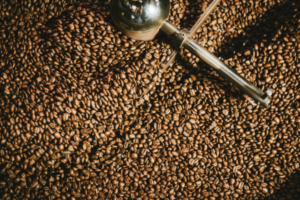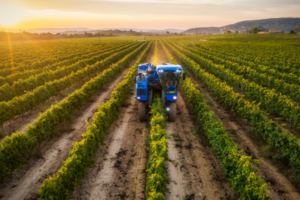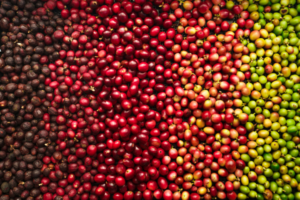Coffee has become much more than just a morning pick-me-up; it has evolved into a sophisticated beverage enjoyed by connoisseurs worldwide. The rise of specialty coffee has introduced coffee enthusiasts to a realm of flavors, aromas, and complexities previously unexplored. The journey from bean to cup involves several critical stages, with two pivotal factors playing an indispensable role in the creation of exceptional coffee: terroir and roasting.
Understanding Terroir in Coffee Cultivation
Terroir, a term borrowed from the wine industry, refers to the unique environmental factors that influence the growth and development of coffee beans. These factors include altitude, climate, soil composition, rainfall patterns, and even the proximity to other plants or crops. The combination of these elements imbues coffee beans with distinct characteristics, shaping the final cup profile.
- Altitude: The elevation at which coffee is grown greatly influences its quality. High-altitude regions, typically above 1,200 meters, offer cooler temperatures, slower maturation, and enhanced flavor development. This leads to more complex and refined coffees with vibrant acidity and enticing aromas.
- Climate: Coffee thrives in regions with mild temperatures, consistent rainfall, and distinct wet and dry seasons. A stable climate ensures uniform ripening of coffee cherries and helps maintain the delicate balance of sugars and acids within the beans.
- Soil Composition: The mineral content and nutrient profile of the soil profoundly affect the coffee plant’s growth and, subsequently, the taste of the beans. Rich, well-draining soils provide the necessary elements for healthy coffee trees to flourish and yield higher-quality coffee.
- Rainfall Patterns: Adequate rainfall is essential during the growing season, as coffee plants require a balanced water supply. However, excessive rainfall can lead to overripe cherries and increased disease susceptibility, compromising the coffee’s quality.
The Art of Coffee Roasting
After meticulous cultivation and harvesting, coffee beans reach the roastery, where the roasting process works its magic to unlock their full potential. The transformation from green beans to aromatic, flavorful coffee requires skill, precision, and an understanding of the desired cup profile.
- Roast Levels: Roasters carefully manipulate the duration and temperature of the roasting process to achieve specific roast levels—light, medium, or dark. Each roast level imparts distinct flavor profiles, ranging from bright and acidic for light roasts to rich and bold for dark roasts.
- Development Time: The time beans spend at different temperatures during roasting significantly impacts their flavor. A longer development time leads to caramelization of sugars and the Maillard reaction, creating complex flavors and a well-rounded cup.
- Cooling and Resting: Once the desired roast level is achieved, the beans undergo a cooling process to halt the roasting and preserve the flavor profile. Subsequently, the beans rest for a period of time to allow the gases produced during roasting to escape, leading to a smoother and more balanced cup.
The Marriage of Terroir and Roast
The journey of coffee from terroir to roast is a harmonious interplay of nature’s gifts and the craftsmanship of roasters. The role of terroir in shaping coffee’s inherent qualities cannot be overstated. Beans grown in high-altitude regions with favorable climates and nutrient-rich soils carry a unique flavor fingerprint that sets them apart from others.
Roasting, on the other hand, is an art form that demands experience and precision. A master roaster must delicately balance the natural characteristics of the beans with the desired roast profile to highlight the best attributes of each coffee.
The interconnection between terroir and roasting lies in their shared goal: to showcase the coffee’s intrinsic qualities and create a memorable sensory experience for the consumer. Roasting, when done right, accentuates the inherent flavors present in the beans, allowing the terroir’s fingerprint to shine through in the final cup.
Conclusion
The world of specialty coffee has given rise to a new appreciation for the complexity and diversity of this beloved beverage. From the moment coffee beans begin their journey on the coffee plant to the final roasting process, the roles of terroir and roasting are fundamentally intertwined in determining the quality and flavor of specialty coffee.
As coffee enthusiasts, we can embark on a delightful exploration of different origins and roast levels, allowing us to savor the unique expressions of coffee from around the world. Embracing the significance of terroir and the art of roasting ensures that every cup of specialty coffee is a celebration of nature’s bounty and human craftsmanship. So, the next time you indulge in a cup of your favorite coffee, take a moment to appreciate the journey it undertook—from terroir to roast—to reach your palate with a burst of delightful flavors and aromas.



